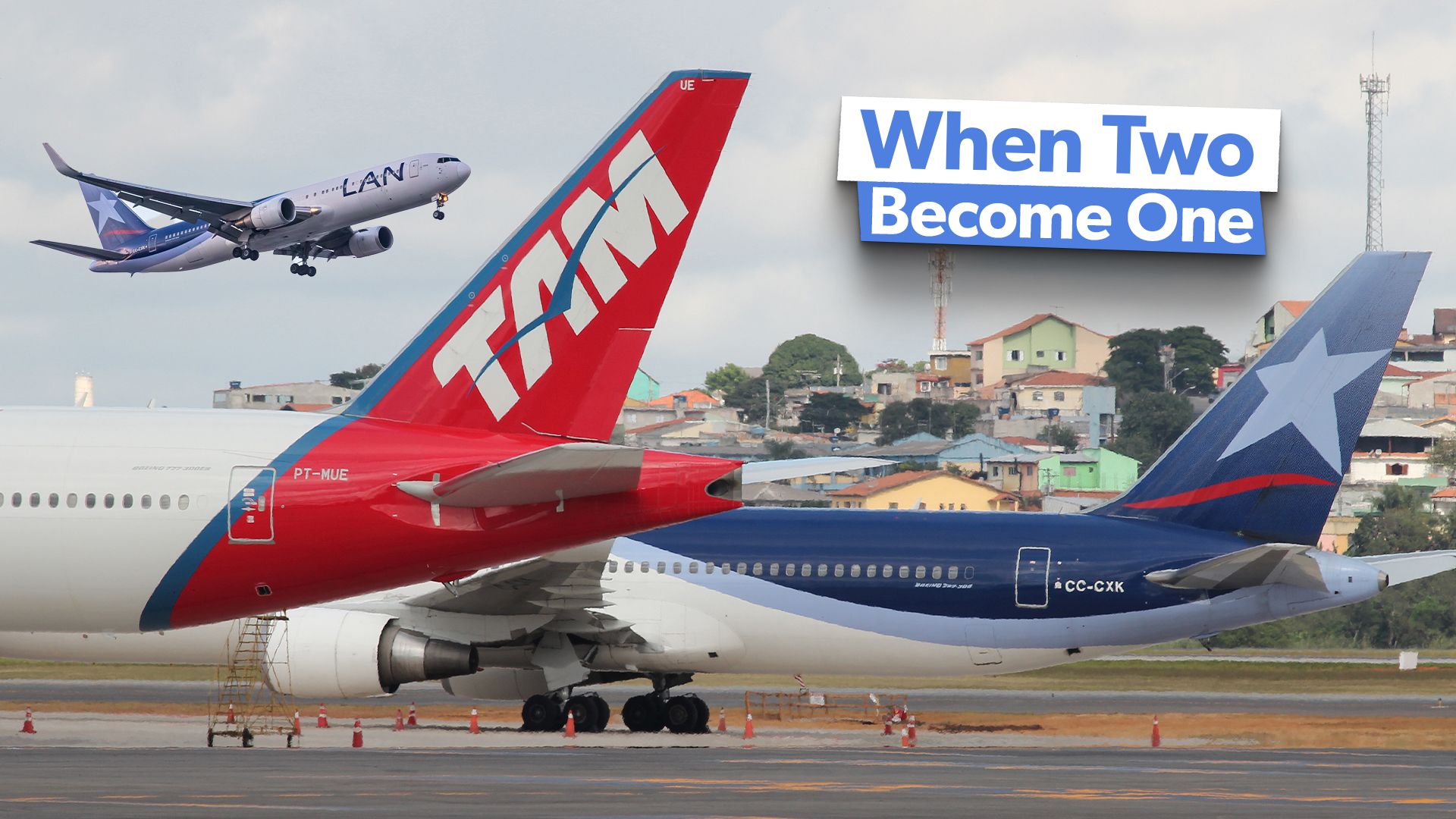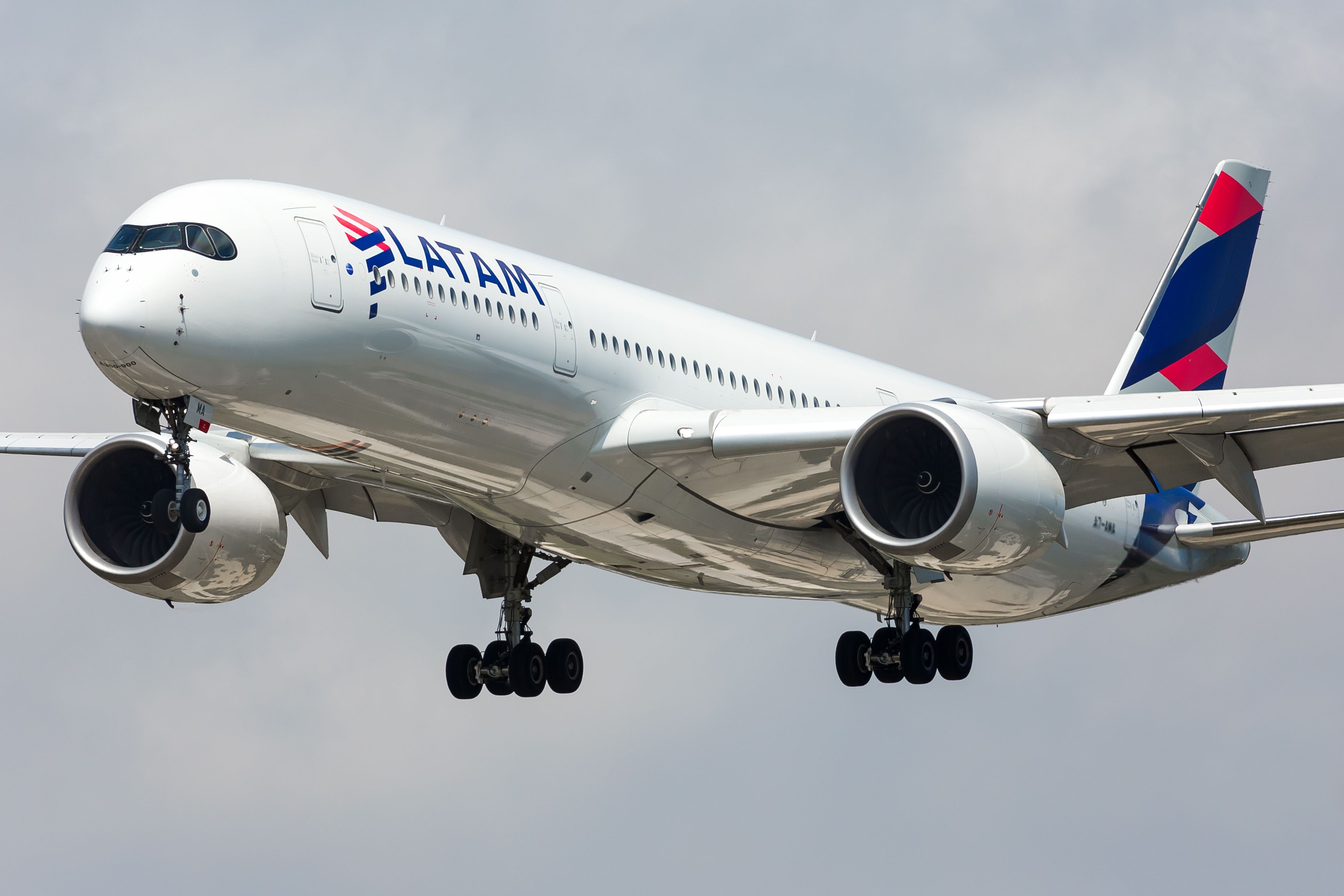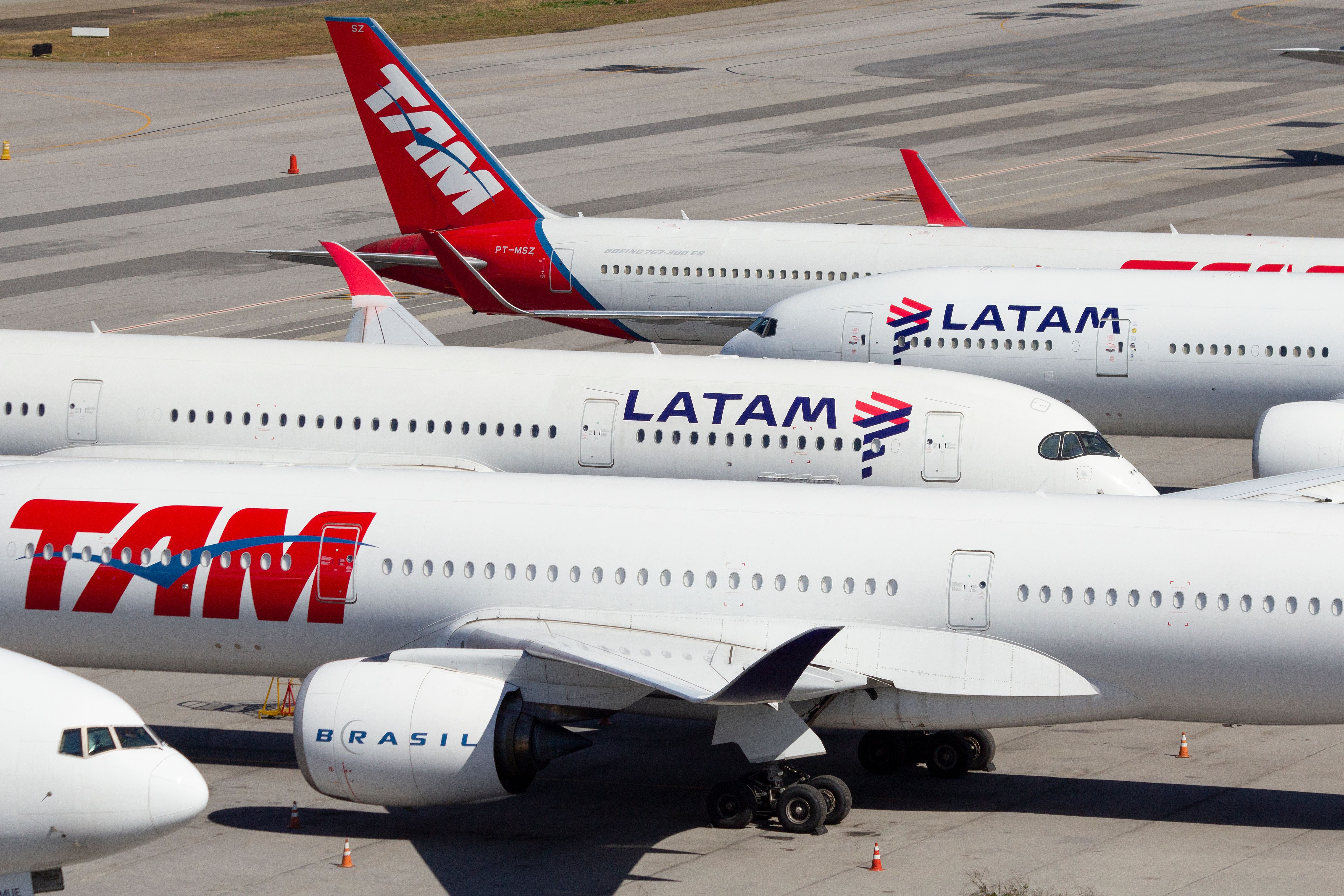Summary
- The LATAM Airlines Group formed from the merger of LAN Airlines and TAM Airlines and today remains a major player in South American aviation.
- LAN Airlines was founded in Chile in 1929, and it expanded with European and American aircraft in the 1960s and 70s.
- TAM Airlines started in Brazil in the 1960s, expanded operations, and eventually joined with LAN in 2010 to become LATAM.
The
LATAM
Airlines Group is a multinational airline organization headquartered in Santiago, Chile, and remains the largest airline in Latin America with multiple subsidiaries operating across the continent.
Despite declaring bankruptcy during the depths of the COVID-19 pandemic in 2020, the carrier still operates as an important multinational air transport company, one which remains actively listed on the Santiago Stock Exchange.
However, this multinational conglomerate did not emerge overnight and came from the fusion of two vibrant airlines that had previously served as some of the most important in South America.
LAN Airlines, the original flag carrier of Chile, was launched back in 1932 and expanded through multiple rebrandings to become a large multinational airline with hubs across South America. Before the merger, the airline was even a member of the global Oneworld alliance.
Photo: Fasttailwind | Shutterstock
The other half of the merger that created LATAM was former Brazilian legacy carrier TAM, an airline that was launched nearly 50 years ago and operated primarily from major hubs in São Paulo, Fortaleza, and Brasília.
The carrier operated flights to destinations across the globe and was listed on both the São Paulo Stock Exchange and the New York Stock Exchange. Furthermore, the carrier was also a member of the Star Alliance before the merger.
In 2012, when LAN and TAM officially signed binding agreements to merge the two carriers, South America suddenly went from having many major airlines to a single dominant conglomerate. Let’s take a deeper look at these two carriers which merged to form the continent’s largest airline.
LAN Airlines: Chile’s long-time dominant airline
LAN Airlines was originally founded on March 5th, 1929 as Linea Aeropostal Santiago-Arica by Arturo Merino Benitez, a Commodore within the Chilean Air Force.
The carrier was initially focused primarily on postal services but was later rebranded as Linea Aerea Nacional de Chile three years later, operating a simple fleet of two-seat de Havilland Moth aircraft, according to the Retired Chilean Pilots’ Association.
The carrier quickly began to expand its domestic route offerings and limited the use of U.S.-built aircraft, as per government incentives. Throughout the 1930s and 1940s, LAN expanded its fleet with the acquisition of more European aircraft and further established itself within the industry through international agreements.
By the time the 1960s came around, LAN began to transition towards jet travel, with the acquisition of French Sud Aviation Caravelle aircraft and then later Boeing 707 quad-engine jets.
These long-range aircraft allowed the airline to expand its route network to include destinations in the United States, Oceania, and even Europe. By 1956, the carrier was cementing its place in the history books by flying over Antarctica.
The airline continued to grow throughout the 1980s, introducing aircraft like the Boeing 727 and the McDonnell Douglas DC-10, which further allowed for long-haul travel.
In 1989, the carrier was finally privatized, and it began acquiring other airlines to expand into new markets. New airlines such as LAN Argentina and LAN Colombia were established.
By 2004, the airline had united all of its subsidiary airlines into a single company, creating one of South America’s largest multinational airlines.
By the time the 2010s rolled around, the ground was set for LAN to continue its expansion through a merger with TAM, Brazil’s most important airline, according to Mighty Travels.
TAM: Brazilian aviation behemoth
TAM Airlines, which was founded in 1961 as Taxi Aereo Marilia, was originally an air taxi service centered around the Brazilian city of Marilia. By 1976, the carrier had expanded to the national level, now operating flights from many different destinations as part of Brazil’s major regional airline system.
In its early years, the airline operated Embraer EMB 110 Bandeirantes, but it later acquired foreign-built Fokker F27 turboprops, due to operational challenges with the Brazilian-made jets. With these aircraft, the carrier was able drastically expand its network capabilities. In 1986, the airline finally decided to go public, and acquired VOTEC, a carrier that it renamed Brasil Central Linhas Aereas.
Photo: Matheus Obst | Shutterstock
Post merger, the airline quickly integrated its networks but still had the two carriers operate separately. By the 1990s, Brazil lifted most restrictions on regional airlines, and aligned both carriers under the singular TAM brand. In 2000, the two carriers were officially merged, and the new airline was named TAM Transportes Aereos.
Throughout the back half of the 1990s, the carrier pursued other acquisitions which allowed it to continue increasing its presence in the nation.
The first intercontinental flights took place in 1997, with nonstop service to Miami International Airport (MIA), and the carrier went transatlantic shortly after in 1999. By the end of the 2010s, TAM had become a major force in the Latin American aviation market with over 30 million annual passengers and membership within the Star Alliance, according to the organization.
In 2010, TAM announced that it would be merging with LAN Chile, to form a new organization that would be named the LATAM Airlines Group. As such an important and far-reaching conglomerate, the newly-formed company would take years to reach complete regulatory approval.
It took until 2016 for TAM flights to officially be branded as LATAM. However, the TAM callsign was still used for LATAM flights to and from Brazil.
Since entering the larger LATAM conglomerate, the relics of TAM have been rebranded into LATAM Brazil. Despite entering a further-reaching organization after the merger, LATAM Brazil continued to pursue expansion, with a former Paraguay-based subsidiary entering the organization as LATAM Paraguay in 2016, according to AeroTime.



